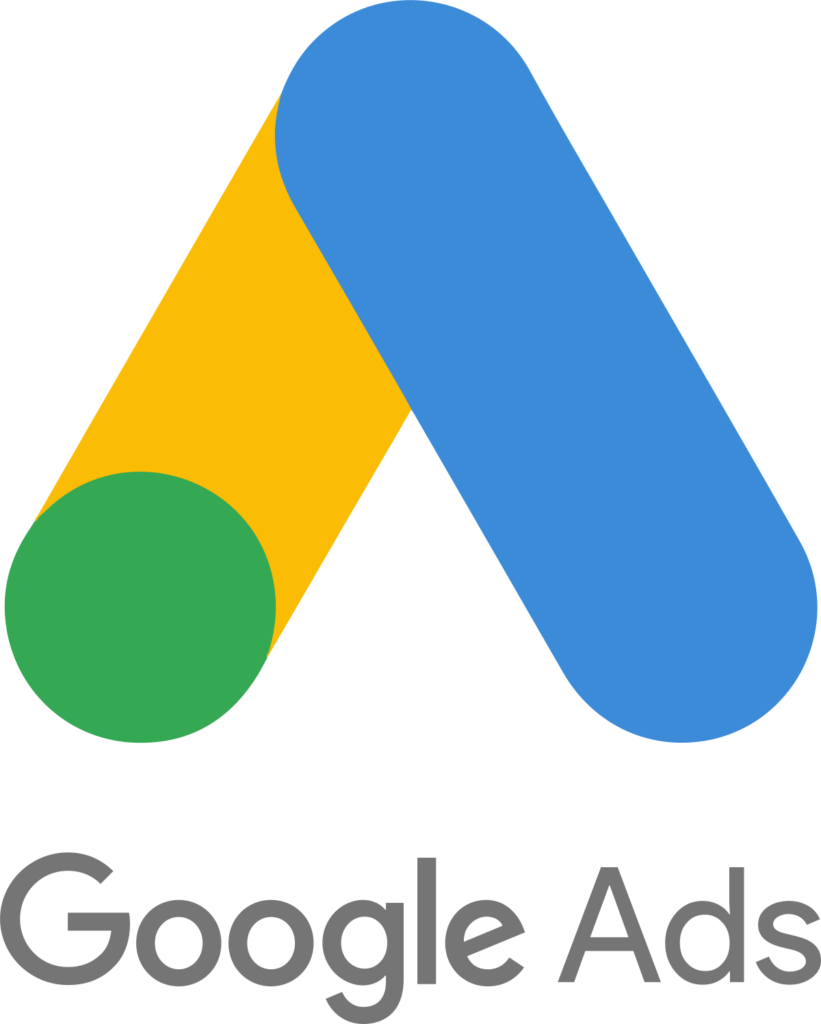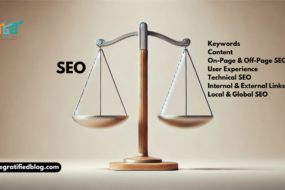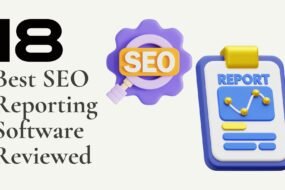
In the dynamic realm of digital marketing, businesses continually strive for the most effective strategies to increase their online visibility and draw in website visitors. Two of the most prominent methods are Google Ads and SEO, each offering unique benefits and challenges. The “Google Ads vs SEO” debate is critical for marketers looking to optimize their efforts and maximize their return on investment.
Gaining insight into the differences between these two methods is crucial for making well-informed choices that align with your business goals. So, this blog post will explore the intricacies of Google Ads vs. SEO to help you determine the best strategy for your business.
So, let’s begin by exploring the concept of Google Ads and delving into the essence of SEO.
What Are Google Ads?

Google Ads, formerly Google AdWords, is an online advertising platform developed by Google. In it, advertisers bid on specific keywords to display their clickable ads in Google’s search results and across its network.
Google Ads functions based on a pay-per-click (PPC) model, wherein businesses pay only when users click on their ads. It encompasses various ads, including search, display, shopping, and video ads, allowing companies to target their audience based on demographics, location, and user behavior.
This platform provides immediate visibility and measurable results, making it an effective tool for generating website traffic and conversions.
What Is SEO?

Search Engine Optimization, or SEO, encompasses strategies to improve a website’s visibility and position on SERPs to drive organic traffic to relevant keywords. It involves various techniques, including on-page optimization (e.g., content quality, keyword usage, meta tags), off-page optimization (e.g., backlinks, social signals), and technical SEO (e.g., site speed, mobile-friendliness).
Unlike paid advertising, SEO focuses on organic search results, which can lead to sustained, long-term traffic growth. By enhancing a website’s relevance and authority, SEO helps attract more qualified visitors, build trust, and ultimately improve overall online presence.
With a foundational understanding, let’s delve into the critical distinctions between these two methods.
Google Ads Vs SEO: Key Differences
Cost Structure
Google Ads operates on a pay-per-click (PPC) model, where advertisers compete for keywords and incur charges when users click on their advertisements. This allows for immediate visibility and traffic, but costs can quickly increase, especially for highly competitive keywords.
Conversely, SEO involves investing time and resources to optimize a website for organic search results. While there are no direct costs for clicks, expenses can include hiring SEO professionals, creating quality content, and implementing technical improvements. Over time, SEO can become more cost-effective, but it requires ongoing effort and maintenance to sustain rankings.
Timeframe for Results
One of the most significant differences between Google Ads and SEO is the timeframe for achieving results. Google Ads offers immediate visibility; your Ads can begin displaying in search results and driving traffic as soon as your campaign is live. This is ideal for businesses seeking quick wins and immediate returns.
On the other hand, SEO is a strategy focused on long-term results, capable of taking months to show significant results. Building organic rankings involves gradually optimizing content, earning backlinks, and improving site authority. While the initial phase may be slower, the benefits of SEO can be more enduring and sustainable.
Sustainability and Longevity
Google Ads provides short-term visibility that is directly tied to your advertising budget. When you cease payments for ads, your visibility and traffic drop instantly. This makes it a less sustainable option if long-term, consistent traffic is your goal.
Conversely, SEO builds organic visibility that can last as long as your site maintains its relevance and authority. Once you achieve strong rankings, you can continue to attract traffic without ongoing payments, although continual optimization is necessary to stay competitive and adapt to search engine algorithm updates.
Click-Through Rates (CTR)
Click-through rates (CTR) differ significantly between paid ads and organic search results. Users often perceive organic results as more trustworthy and relevant, leading to higher CTRs than paid ads.
While Google Ads can secure top positions in search results and attract clicks from users looking for immediate solutions, many users skip ads in favor of organic listings. Consequently, SEO often results in higher engagement and lower bounce rates, as visitors trust the credibility of organic search results more.
User Trust and Credibility
SEO generally fosters greater trust and credibility among users compared to Google Ads. Organic search results are seen as more authoritative and reliable since they are earned through relevance and quality rather than paid for.
Businesses that achieve high rankings in organic search results often gain trust from users organic search results, which can enhance your brand’s reputation and customer loyalty.
While Google Ads can also build brand awareness and trust over time, the immediate nature of paid placements may carry a different level of inherent credibility than organic listings.
Control and Flexibility
Google Ads offers high control and flexibility, enabling advertisers to modify their campaigns instantly according to their performance data. You can quickly change ad copy, keywords, targeting options, and budget to optimize results. This agility is advantageous for responding to market changes and testing new strategies.
While offering strategic control, SEO requires more time to implement changes and see their impact. Optimizing content, earning backlinks, and addressing technical issues involve a longer feedback loop, making SEO less responsive to immediate shifts but more stable over the long term.
These differences highlight the unique strengths and challenges of Google Ads and SEO. Understanding these distinctions can help businesses choose the right approach or a combination of both to achieve their marketing objectives.
Now, let’s explore how to select the appropriate strategy
Choosing The Right Strategy
Business Goals And Objectives
The choice between Google Ads and SEO largely depends on your business goals. If you seek immediate results and quick sales, Google Ads is ideal due to its rapid visibility. SEO is more suitable for long-term brand building and sustained organic traffic as it gradually enhances your site’s authority and relevance.
Budget Considerations
The budget you have available plays a vital role in this decision. Google Ads requires ongoing financial investment, with costs accumulating based on clicks and competition. While initially resource-intensive, SEO can become more cost-effective, providing continuous traffic without direct payment for each visitor.
Competitive Landscape
Assessing your market’s competitiveness is essential. SEO might be more feasible for sustainable growth in highly competitive industries with expensive keywords. However, if your market has low competition or you need to penetrate quickly, Google Ads can offer an immediate advantage despite higher costs.
Resources And Expertise
The resources and expertise you have at your disposal are vital considerations. If you have a skilled team or can invest in professional help, SEO can provide long-lasting benefits. Conversely, leveraging Google Ads with precise targeting and quick adjustments can be more effective if you need faster results and have a flexible budget.
FAQs
Q1. Which is more cost-effective, Google Ads or SEO?
- Google Ads can provide immediate results but requires ongoing spending, making it suitable for short-term campaigns. While initially demanding, SEO can be more cost-effective as organic traffic grows without continuous click payment.
Q2. Which strategy delivers quicker results, Google Ads or SEO?
- Google Ads can generate immediate traffic and leads once campaigns are active, making it ideal for instant visibility. Conversely, SEO requires time to build authority and rankings, delivering gradual but sustainable results over the long term.
Q3. Can Google Ads and SEO be used together?
- Yes, integrating Google Ads and SEO can enhance overall marketing performance. Google Ads can provide immediate visibility, while SEO builds long-term organic traffic. Combining both strategies allows businesses to target different stages of the customer journey effectively.
Q4. How do I choose between Google Ads and SEO for my business?
- Consider your goals, budget, competition, and resources. If you require instant outcomes and possess a flexible budget, Google Ads may be suitable. For long-term growth, brand building, and cost-effective traffic, prioritize SEO, but consider integrating both strategies for a comprehensive approach.
Conclusion
Your understanding of Google Ads vs SEO persists because both strategies have distinct advantages and can be effective depending on your marketing objectives. Instead of viewing them as mutually exclusive, consider utilizing the benefits of both Google Ads and SEO to enhance a comprehensive digital marketing strategy. Businesses can achieve a balanced approach to SEO that maximizes visibility, engagement, and conversions over time.
However, if you still have any questions related to the blog, please feel free to leave them in the comment section below. We will be happy to answer them.
Thanks for reading 🙂








No Comments